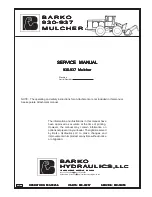
Document: 333D012G
5-18-2007
- 21 -
Cleaning and Disinfecting Stainless Steel
Simple Cleaning
IMPORTANT
Do not use steel wool or steel pads when cleaning stainless steel.
Dirt deposits on stainless steel (dust, dirt and finger marks) can easily be removed. Frequently, warm water, with or
without detergent, is sufficient. If this does not remove the deposits, mild, non-abrasive household cleaners can be
used with warm water and bristle brushes, sponges or clean cloths.
Iron rust discoloration can be treated by rubbing the surface with a solution of 15% to 20% by volume of Nitric
Acid and water and letting it stand for one to two minutes to loosen the rust.
Disinfection
The purpose of disinfection is to destroy particular organisms that could pose a potential hazard to humans or
compromise the integrity of the experiment. It is important to use a suitable disinfectant in the concentration
appropriate to the organism being killed. Standard disinfectants include: Hypochloride (chlorine bleach), Iodophor-
Detergent, Ethanol, Phenol and Alcohol.
IMPORTANT
Rinsing in sterile hot water and wiping the surface completely dry should always follow disinfection and
cleaning.
Disinfect the work surface before and after every procedure.
1.
Disinfect surfaces of all equipment used.
2.
Remove all items from the inside of the cabinet.
3.
Place all items that may have come in contact with the agent(s), such as used pipettes, in a plastic bag or
other suitable container.
4.
Disinfect the entire inside surface of the cabinet.
For additional information on cleaning and disinfecting stainless steel, please refer to: “Decontamination,
Sterilization, Disinfection, and Antisepsis”, Vesley, Donald and Lauer, James L., Laboratory
Safety Principles and
Practices, Second Edition
, 1995, Fleming, D.O., Richardson, J.H., Tulis, J.J. and Vesley, D., editors, ASM Press,
Washington, D.C., pp. 219-237; and Biosafety Reference Manual, Second Edition, 1995, Heinsohn, P.A., Jacobs,
R.R. and Concoby, B.A., editors, AIHA Publications, pp.101-110.
Using Ancillary Equipment
The rule to keep in mind is that the more equipment placed in the cabinet, the greater will be the air turbulence it
causes. The turbulence resulting from equipment and materials can disrupt the designed airflow and reduce the
effectiveness of the cabinet. When you use equipment which rotates, vibrates or heats, be sure to place it at the rear of
the work area if possible. This will help minimize the turbulence at the access opening.
Summary of Contents for SG403A
Page 35: ...Document 333D012G 5 18 2007 34 Appendix ...
Page 38: ...Document 333D012G 5 18 2007 37 Dimensional Drawing Standard Configuration SG403A ...
Page 39: ...Document 333D012G 5 18 2007 38 Dimensional Drawing Standard Configuration SG603A ...
Page 41: ...Document 333D012G 5 18 2007 40 Interior View Exterior View Cable port plug not shown ...
Page 42: ...Document 333D012G 5 18 2007 41 Ladder Schematic SG403A ...
Page 43: ...Document 333D012G 5 18 2007 42 Ladder Schematic SG603A ...
















































